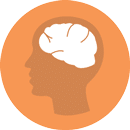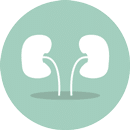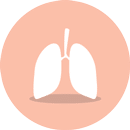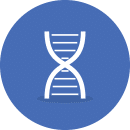Surveillance and Screening
Regular surveillance and screening is absolutely critical for anyone living with TSC as symptoms change over time. Regular surveillance and screening offers the best chance of early and successful intervention.
In 2021, the International Tuberous Sclerosis Complex Consensus Group reviewed and updated the TSC criteria for diagnosis, surveillance and management published in 2013. The published papers are available below.
This page provides brief summary of the consensus recommendations for monitoring individuals with TSC. The updated diagnostic criteria for TSC is available here.
You can also get a printable pdf of both the diagnostic criteria and the surveillance and management guidelines by clicking here. This can be useful information to print out for your GP.
Understanding TSC
Surveillance and management guidelines for TSC

| Procedure | For newly diagnosed or suspected TSC | For individuals already diagnosed with TSC |
|---|---|---|
| Brain MRI with and without gadolinium | Yes | Every 1-3 years up to age 25; periodically as adults if SEGAs present in childhood |
| Electroencephalogram (EEG) | Yes; if abnormal, follow-up with 24-hour video EEG | Routine EEG determined by clinical need; video EEG when seizure occurrence is unclear or when unexplained behavioral or neurological changes occur |
| TAND checklist | Yes | At least annually at each clinical visit |
| Comprehensive evaluation for TAND | If warranted by TAND checklist analysis | At key development time points (years): 0-3, 3-6, 6-9, 12-16, 28-35, and as needed thereafter |
| Counsel parents of infants | Educate parents to recognize infantile spasms* | Not applicable |



| Procedure | For newly diagnosed or suspected TSC | For individuals already diagnosed with TSC |
|---|---|---|
| Complete eye exam with dilated fundoscopy | Yes | Annually if lesions or symptoms identified at baseline |
| Detailed skin exam | Yes | Annually |
| Detailed dental exam | Yes | Every 6 months |
| Panoramic radiographs of teeth | If age 7 or older | At age 7 if not done previously |

| Procedure | For newly diagnosed or suspected TSC | For individuals already diagnosed with TSC |
|---|---|---|
| Fetal echocardiography | Only if rhabdomyomas identified by prenatal ultrasound | Not applicable |
| Echocardiogram | Yes in children, especially if younger than 3 years | Every 1-3 years if rhabdomyoma present in asymptomatic children; more frequently in symptomatic individuals |
| Electrocardiogram (ECG/EKG) | Yes | Every 3-5 years; more frequently if symptomatic |

| Procedure | For newly diagnosed or suspected TSC | For individuals already diagnosed with TSC |
|---|---|---|
| Blood pressure | Yes | Annually |
| Abdominal MRI** | Yes | Every 1-3 years |
| Glomerular filtration rate (GFR) test | Yes | Annually |
Standard Search | Medicare Benefits Schedule (health.gov.au),

| Procedure | For newly diagnosed or suspected TSC | For individuals already diagnosed with TSC |
|---|---|---|
| Clinical screening for lymphangioleiomyomatosis (LAM) symptoms*** | Yes | At each clinic visit |
| Pulmonary function test and 6-minute walk test | In all females age 18 or older; in adult males only if symptomatic | Annually if lung cysts detected by high resolution computed tomography (HCRT) |
| High resolution computed tomography (HCRT) of chest | In females 18 years and older; in adult males only if symptomatic | Every 2-3 years if lung cysts detected on HRCT; otherwise every 5-10 years |
| Counsel on risks of smoking and estrogen use | In adolescent and adult females | At each clinic visit for individuals at risk of LAM |

| Procedure | For newly diagnosed or suspected TSC | For individuals already diagnosed with TSC |
|---|---|---|
| Genetics consultation | Obtain 3-generation family history | Offer genetic testing of TSC1/2 and counselling if not done previously in individuals of reproductive age |
Peer-Reviewed, Published Consensus Papers
The reference papers below are available free of charge with open access to anyone in the world. We encourage you to share these links with your health professionals. Additional publications will be added to this page as they become available.
Stuart, C., Fladrowski, C., Flinn, J., Öberg, B., Peron, A., Rozenberg, M., & Smith, C. A. (2021). Beyond the Guidelines: How We Can Improve Healthcare for People with Tuberous Sclerosis Complex Around the World. Pediatric Neurology, 123, 77-84.
Northrup, H., et al. Tuberous Sclerosis Complex Diagnostic Criteria Update: Recommendations of the 2012 International Tuberous Sclerosis Complex Consensus Conference. Pediatric Neurology (October 2013).
Krueger, D. A., et al. Tuberous Sclerosis Complex Surveillance and Management: Recommendations of the 2012 International Tuberous Sclerosis Complex Consensus Conference. Pediatric Neurology (October 2013).
Roth, J., et al. Subependymal Giant Cell Astrocytoma: Diagnosis, Screening, and Treatment. Recommendations From the International Tuberous Sclerosis Complex Consensus Conference 2012. Pediatric Neurology (December 2013).
Leclezio, L., et al. Pilot Validation of the Tuberous Sclerosis-Associated Neuropsychiatric Disorders (TAND) Checklist. Pediatric Neurology (January 2015).
de Vries, P. J., et al. Tuberous Sclerosis Associated Neuropsychiatric Disorders (TAND) and the TAND Checklist. Pediatric Neurology (January 2015).
Hinton, R. B., et al. Cardiovascular manifestations of tuberous sclerosis complex and summary of the revised diagnostic criteria and surveillance and management recommendations from the international tuberous sclerosis consensus group. Journal of the American Heart Association (November 2014).
Teng, J. M. C., et al. Dermatologic and Dental Aspects of the 2012 International Tuberous Sclerosis Complex Consensus Statements. JAMA Dermatology (October 2014).
